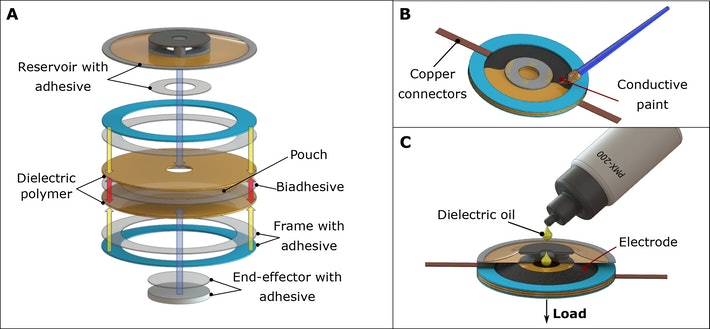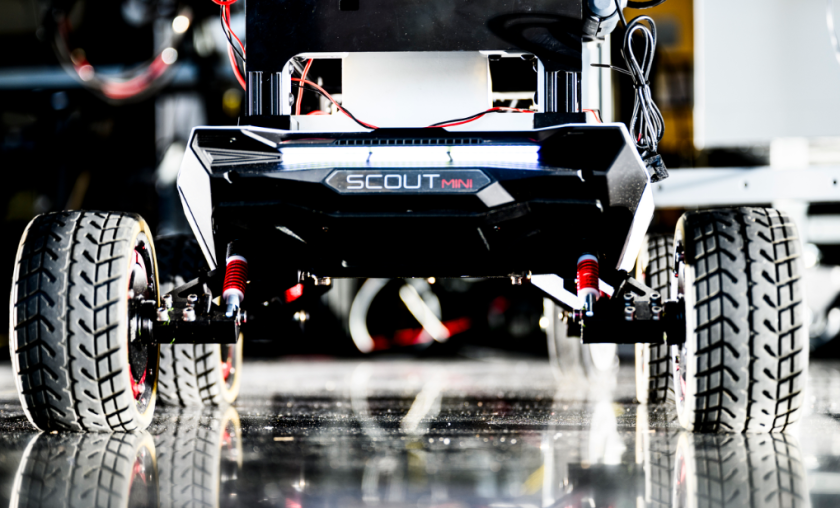
An Italian team of researchers lead by Prof. Marco Fontana, in collaboration with the departments of Industrial Engineering of the Universities of Trento and Bologna, have created an Electrostatic Bellow Muscle (EBM) to fabricate efficient small-scale robots.
The innovative robotic muscle has potential of powering itself for a long period of time beyond its preliminary charge.
The design makes use of electrostatic bellows to lift objects up to 70 times its own weight.
EBM works on the principle of bellows that elongates and contracts under the influence of external pressure. In this case, the movement is created by electrostatic attraction forces.
Self-reliant autonomous robots
Like human muscles, the new lab grown muscle can apply, reserve and create its own power. Researchers envision that it will take battery-powered autonomous robots to the next level.
With sustain battery life and power, bots would easily explore rescue missions and terrains which are quite dangerous and unfit for humans to navigate.
Artificial Muscles for Interactive Soft Robotics
When we think about bots, two main things come to our mind,
- metallic body
- rigid structures
However, with the new muscles, these machines will have human like assembly. This will give a more friendly approach in overall dynamics of human machine interaction.
Also, with soft muscles, these bots may squeeze in tight spaces – reminds me of Baymax. And in electronic devices it will allow for smart and interactive soft robotic systems.

EBM clubs electric charge and pressure
As per the researchers, conventionally artificial muscle designs were proposed to be operated by fluid pressure or thermo-pneumatics. However, both the ideas fall short when it comes to cost and scalability.
For instance, if millimeter-sized robot muscle when powered cannot stretch to centimeters then the scalability with design will always remain a far-fetched dream.
In the current research, scientists designed an electrostatic bellow muscle (EBM) that club both electric charge and pressure. Thus, creating a muscle has a potential of generator, actuator, and pump all within a single layout.
In other words, even when the muscle is at rest, it’s still working to store power for its succeeding movement.
Prof. Fontana added that this feature is super important when it comes to areas like:
- active robotic prosthesis
- wearable robots
- robots for search and rescue operations
- energy conservation in automation industry
Electrostatic bellow muscle design
Scientists combined Euro sized layers of electroactive films together. These films were in tiny donut-shaped structures. Small channel is made at the centre so that dielectric (or charge insulting) oil can be introduced.
When pressed together, they appear like a tiny ring. But when a voltage is applied, individual layers become oppositely charged and pull toward each other.
With this design, the electrostatic bellow muscle can squeeze in by working against an external force for instance, weight.
To check its tensile strength, researchers gave it objects ranging from 1-kg plastic bottles to over 500-kg metal plates.
They also tested it efficacy in other areas like pump and a passive energy harvester.

EBM can lift an impressive amount of mass
Researchers observed the following conclusions:
- The EBM can lift nearly 70 times its won weight.
- In the role of generator, it can convert 20% of its own energy
Although, the results are at par with the conventional muscle designs but in this case, the result is product of compact and cheaper design.
Takeaway
The EBM looks promising because of its striking features like lightness, scalability and adaptability. However, researchers are of the view that instead of bulking up human-sized robots, the technology need to showcase in smaller bots.
With electrostatic bellow muscle design, we have taken a step closer to the future of self-powered robots.



